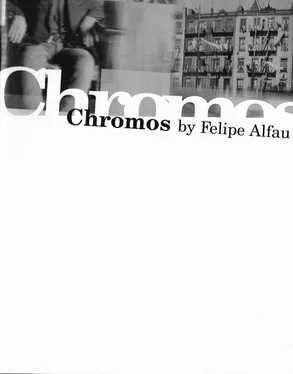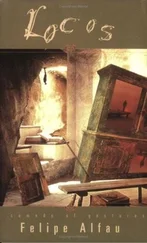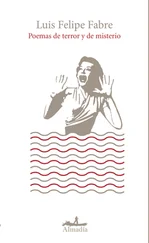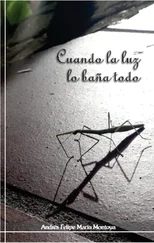This put us back into music. Out of the vast tracts of records that covered the walls of an adjoining room, he picked unerringly the album he wanted and in no time at all had a record spinning on the phonograph, a tremendous contraption wired to loudspeakers distributed through the walls, with two turntables so perfectly synchronized that one could detect no break between two records. The music took possession of the room with majestic pride. It was the Leonora No. 3 overture.
“Nothing much to do with Berlios, but listen to that, Dr. Jesucristo. It comes at you from afar, straight at you and then explodes over your head like a storm of eloquence. Much good music has created the impression of latitude, but this one adds to that the impression of depth, of acoustic perspective. It reminds me of that,” he pointed at a reproduction of a picture of Toledo by El Greco which hung on the wall. “It is the empress of overtures, the most dignified and arrogant, the most subjugating and convincing.” He stopped the machine when the music had reached the fulfillment of its first section — exploded over our heads as he said. I was now working on a dish of ropa vieja and his Cuban boy filled my glass with a light red wine, whose color tended more to the vermillion and whose taste left an aftermath on the palate, like a dark shadow of ineffable delight. From my bacchic heaven I considered the Chink’s dish of rice and concluded that if I lifted “the frame of the little machine,” as one might do the cover in an elegant restaurant, I would find that, four dimensionally considered, it was really a dish of spaghetti. Logical but insane.
I set down my dish on the vast moroccan cushion where I was sitting and picked up the Moor’s notes:
. there is no motion; hence, the impossibility of explaining it — should be evident to anyone who has looked at the graph of a function.
. all the little things that check, if only one takes notice. Bodies with greater mass are naturally less liable to have bends along their fourth dimension— questions of action and reaction — two interacting bodies — displacement inversely proportional to mass — the body with the lesser mass has the more bend, its fourth dimensional length is greater, its time more rapid — checks with some conclusions about the rate of vibrations in heavier and lighter stars— simplification.
The Moor’s phrases reached me disconnectedly, intruding and alternating with his notes:
“. the same romantic school. Abel and Galois, the Chopin and Schumann of mathematics, but immensely more successful in their medium — utterly ridiculous. ”
Seen in this light, phenomena reveal a pattern where details fall accurately into place. Cosmology, things of growth, procreation, evolution, questions of heredity, even matters of social movements and trends — the very words give the whole thing away. The following graphs illustrate.
“Aside from Day and one or two others, there has been no analytical attack on the question of harmony — the minor key as a composite of old Greek modes. It is to laugh. Obvious to anyone with an ear that the minor is but an accompanying key derived from the old method of accompanying in thirds. Perfectly simple.”
. here is something else that checks: orbits sweeping equal areas in equal times. But of course the elliptic orbit is nothing but the projection of a circular orbit inclined into the fourth dimension. Properly speaking, it is a four dimensional helix. Anything that moves represents such an inclination — naturally! Equal areas in equal times as it should happen in any uniform circular motion. A spinning wheel seen at an angle appears as an ellipse whose spokes sweep equal areas in equal times. No need of complicated mechanisms to slow up and accelerate — doesn’t know anything about our calculations of its projection, but goes merrily on about its business of a simple harmonic motion— Perfectly natural. What else could it do? As for the eccentricity of the orbit — the center becoming a focus.
Here followed more equations and diagrams which I chose to disregard. Garcia, who had been looking at the notes over my shoulder, had left, and through the big open French doors I could see him pacing back and forth in the Moorish garden, a drink in one hand and a cigarette in the other. Garcia had always entertained the misconception that all sciences, and particularly mathematics, were dull and unimaginative. Now I knew that he felt they were not only that, but also evil with a purpose and intent upon the mocking destruction of everything he held dear. I was sure that he disapproved of all this talk and theories on subjects he knew nothing about and had decided to remove himself in protest, but then he came in, laid his glass down on a taboret by the doors and stood there framed, dramatic. He said:
“But if you eliminate time and motion, you rob life of all its drama, of all romance, of all adventure.” He must have been ruminating and worrying about the matter while pacing the garden. “You kill it, you kill everything. It is a dead universe, as you say, changeless, hopeless. Life becomes—” He groped for words and then gave up with a resigned shrug, picked up his glass and resumed his pacing in the garden.
“Nonsense,” the Moor was saying. “A picture or a statue is not less beautiful because it is all there to be seen at once. Why is there nothing absurd about my finding a similarity between the Leonora overture, which is all sequence in time, and El Greco’s Toledo , which is all simultaneity in space? Possibly the fourth dimensional structure of the one suggests to me something about the two dimensional structure of the other— Oh! I know,” he waved away the objection. “It might suggest something else to you. We Spaniards must always be individualistic, have our very own viewpoint — the national system. But that is beside the point. The fact that the similarity is admissible, that it may be considered, is what makes it significant, and besides, understanding these things would change nothing, at least not for a long time—” The note I was reading seemed to elaborate the point:
Man will have to change a great deal before he can have the intuition of the fourth dimension spatially. We don’t even see three. We see only two and interpret the third from deformations of the others. We can only conceive of three coordinates as interrelated and making any sense of space, of coexistence, of simultaneity. Anything beyond that puzzles us, eludes, bewilders us, makes us dizzy with that feeling of time and motion, of flowing and enduring which we cannot explain, but which is irrevocably bound with our intuition. We see, we feel, but don’t know what it’s all about. Someday perhaps man will actually see the third dimension, but to see it properly one would have to see all sides of an object at the same time. This could only be done from a fourth dimension which in turn would be interpreted as perspective and no longer as time and motion. Who knows? The more advanced man is, the less motion he will see, the less time he will experience.
And the Moor was still talking:
“In the future, a long time distance from here-now, as the relativity publicity agents put it — and you know, it is perfectly safe to consider happenings so far removed that we will never be held responsible— we may be able to see yesterday, today and tomorrow spread out before us. What a panorama of interwoven lines, spirals and helicles and undulating curves — a tangle so thick, leaving no empty room, that in the limiting case it will appear like a solid mass, perfectly homogeneous and continuous and simple— Completely insane; the virtuous circle; from primitive and paradisiac simplicity to the conception of absolute complexity which only leads back to simplicity — and they may even have telescopes which will show beyond yesterday and tomorrow and the confines of our own existence — remarkable telescopes like the one on Cherry Street. Now I know the reason why I baptized that place El Telescopio. There, after a few bottles, one can see the past and the future at the same time without difficulty and it is anything but boring or dead — there I go arguing with myself. Typical castizo. It is the national system. Forestall any possibility of your interlocutor winning a point. Beat him to it — simply divine.”
Читать дальше












